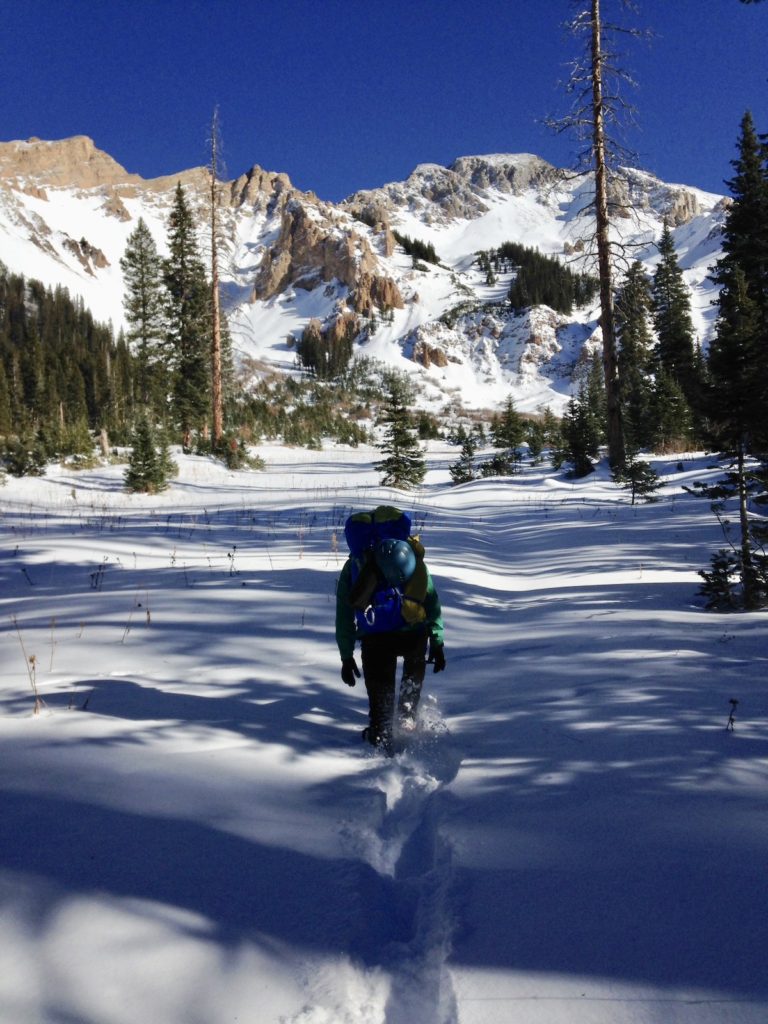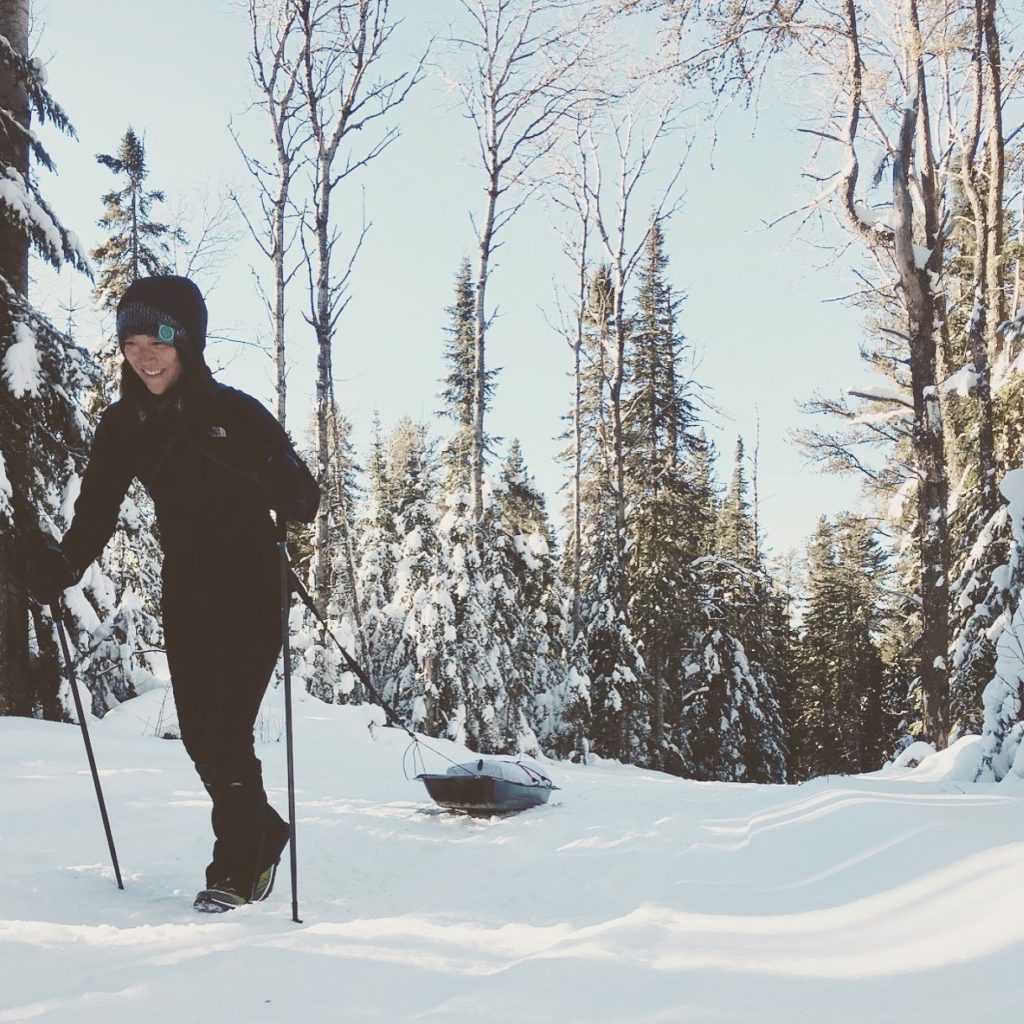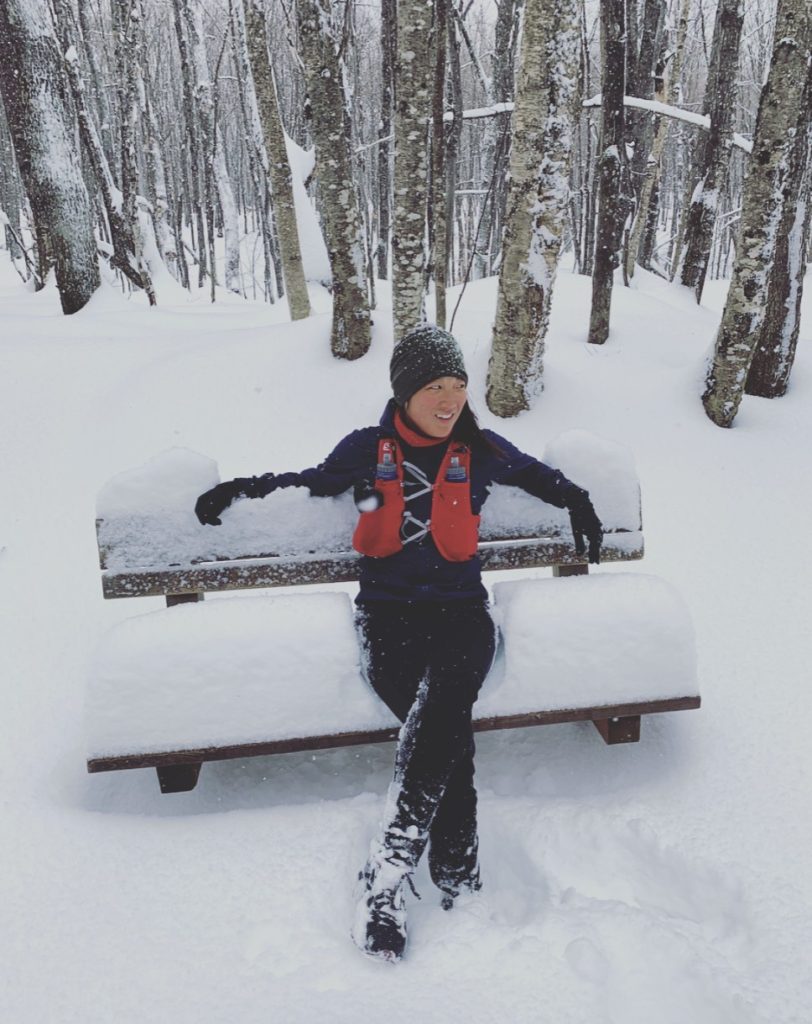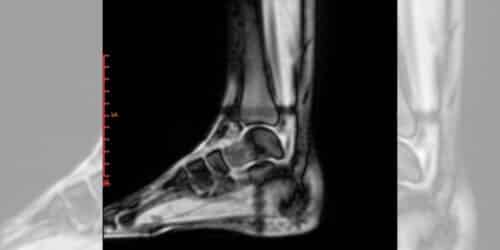Winter is long and inevitable. The following advice is centered around a basic realization that has changed my approach to winter and enabled me to embrace those long stretches of cold days, briefly lit only by murky gray skies and punctuated by snow and wind… more than I used to.

A winter run is made possible once you make the laborious decision to exchange that pleasant, warm bed, car, office, or trailhead bathroom, for the cold. Given this, it is only natural that we often present ourselves to winter completely and hopelessly overdressed. With winter running, the discomfort is immediate. We are often confronted by a harsh blast of wind that stings our face and burns our eyes, while simultaneously sucking the breath right out of our lungs. It can feel oppressive, but if you can will yourself through those initial stages of physical shock and emotional regret, you can get to the real task.
Do Not Sweat
Prior to attempting my first winter ultra, I received a simple piece of advice from a winter ultrarunning veteran: do not sweat. The more I thought about it, the more sense it made. I started to recall the times during winter runs and races that I felt the most vulnerable and desperate: when I was soaked in sweat. Once I got sweaty, I couldn’t stop running because I would immediately get cold. This made me sweat even more. My approach used to be to run hard while soaked in sweaty, heavy layers, until I was safely back in that pleasant, warm bed, car, office, or trailhead bathroom. Fortunately, this approach was not going to work for a multi-day event in the middle of winter. The months leading up to the race were spent tirelessly testing and failing and finally learning, not to sweat. Over the course of 160 miles, almost 60 hours, in wind chills bottoming out near -20 (this helped), I am happy to report that I did not sweat, much.

At the start of the race, a combination of nervous energy and the sudden onset of movement caused me to break a sweat almost immediately. Everyone was moving quickly and I hated the idea of having to stop, pull off the trail, and adjust my layers. I started sweating more, so I stopped. I knew I would be depending on dry layers later in the race, and I also didn’t want to get stuck hauling useless, frozen articles of clothing around with me for the next two days. After a quick re-adjustment, I was once again dry and comfortable. Through repeating this process and managing my effort, I was able to stay this way for the remainder of the race.
Learning not to sweat is the culmination of fine-tuning a few other skills:
#1 Layer.
Winter is cool (pun intended), because you have more control. Think about those hot summer runs when you are desperately peeling off layers and you are still hot. In the winter, the opportunities to add and adjust clothing are almost limitless. You can layer hats, buffs, gloves, shirts, jackets, pants, socks, and likely other things I haven’t even considered. Combine effective layering with steady movement, and proper fueling, and you get to have a lot more control over your body temperature. Like fueling, it can be highly individualized and takes practice.
#2 Trust No One.
Meteorologists are great. Unfortunately, the most predictable thing about the weather is its unpredictability. And that makes meteorologists wrong, a lot. Temperatures can drop sharply, winds can shift unexpectedly, and even a small amount of precipitation can dramatically impact footing and visibility in the winter months. Prepare for the worst and hope for the best. Be sure you have enough layers to stay warm in the event that conditions change. If you are heading out for a long run, carry a small pack that can accommodate adding/removing layers as conditions change. This way you don’t have to return from your run swaddled in random articles of extra clothing creatively secured to your body. Also remember that days are short; include reflective material and lights so that you are not caught trying to navigate your way through the second half of your run on dark, icy trails.
#3 Keep your cool.
This time, I am referring to your mental cool. Experimenting with gear and figuring out what works for you is important, but the ability to stay calm in a stressful situation is just as important. It is easy to feel overwhelmed by your body’s reaction to changing conditions. It can feel scary and out of control. If you have the right gear and have learned what works and what doesn’t, more often than not you will be able to make the necessary adjustments to the other factors within your control to allow you to enjoy your winter run.
#4 The W word.
The quickest way to both prevent and manage sweating once it starts is to adjust your pace. Slowing down and even taking a quick walk break will allow your body to cool down.

Running in the winter, more than any other time of year, deserves careful planning and poses a number of inherent risks. On more than one occasion I have been in situations that have moved from seemingly controlled to relatively dangerous in a very short amount of time. Frostbite and hypothermia are very serious. Like so many of the other factors that contribute to our daily success or demise out on the trail, practice makes progress.















2 Responses
Great article. Let me add my perspective. I sweat easily and heavily. I have learned over the years to always go slowly enough so I don’t sweat (I also have to wear a very light jacket, and pack the down.). What’s interesting is that my overall pace is better than it would normally be, because I have no need for rest breaks. I know that climbing hills and mountains is not a race (although speed is often safety) and I am not trying to best anyone else, but I have observed that my slow, steady, turtle pace always has me passing most other hikers, climbers, and rope teams who have to stop, panting, every 15 minutes for a rest break. I feel I enjoy two advantages — a good, safe, efficient pace; and never feeling like I am working hard, getting tired, and feeling exhausted. Joy.
This is great insight, thank you for sharing your experience! I can relate to many of these points and have also found that achieving that steady effort not only helps me to manage sweating, it also leads to better management of overall pace and avoid a lot of nutrition, GI, and fatigue-related issues.